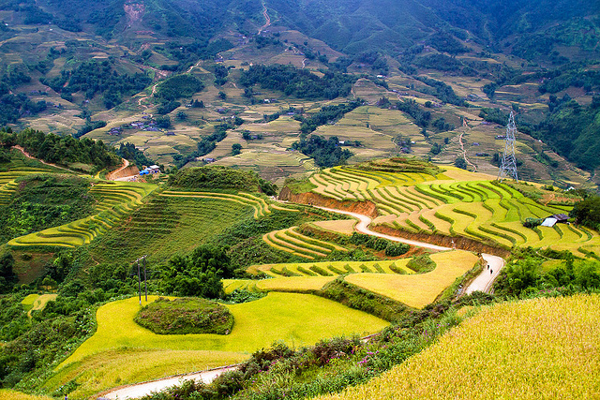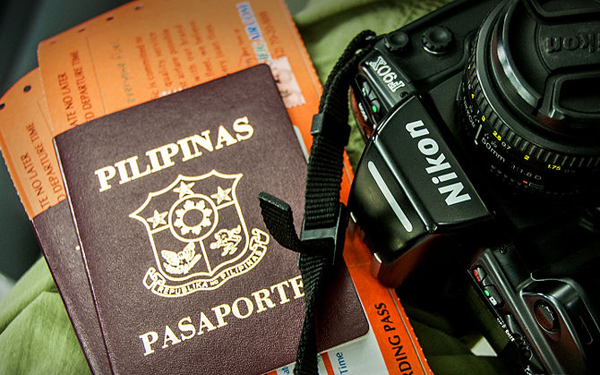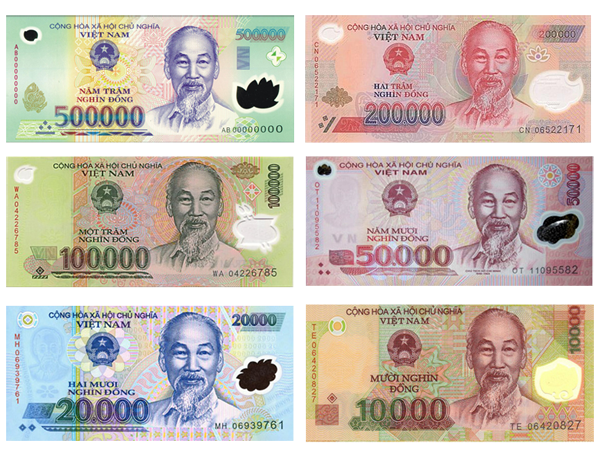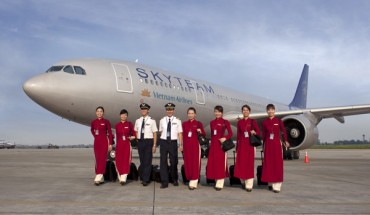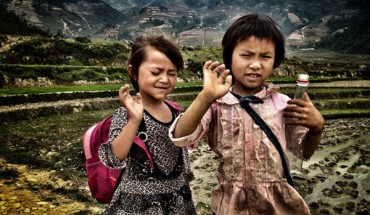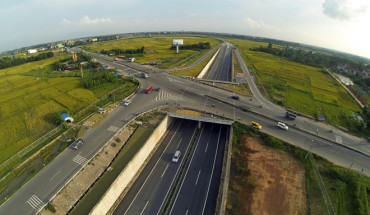Best time to visit the Northwest of Vietnam
There are two seasons in northern Vietnam. Winter generally lasts from November through to April and is marked initially by cool and dry weather, but by January and February temperatures can drop as low as 2° centigrade in some places and persistent drizzle becomes common. The hot summers last from May through to October, with the heaviest rainfall between: May and August.
Visitors to the northern mountains should ideally try to avoid the rainy season, since landslides and road subsidence caused by flash floods can put paid to tightly-planned itineraries. The best time to visit the North West of Vietnam is undoubtedly September-November, when it is relatively dry and cool.
Visas (please contact us for Booking Vietnam Visa)
Everyone visiting Vietnam requires a visa. The tourist visa is valid for one month and can be issued either through a travel agent or directly by a Vietnamese Embassy – your passport and two photographs will need to be submitted along with the application form. Processing the visa involves a fee and can take anything from 5 to 10 working days. We offer visa approval letter service at 1 working day.
Immunization and anti-malarial drugs
For advice on immunization prior to your trip to Vietnam you should contact your doctor at least four weeks before departure. Vaccinations against rabies, hepatitis A and B, tuberculosis, Japanese encephalitis, polio, typhoid, tetanus and diphtheria are usually recommended. Suitable anti-malarial medication for the trip will also be prescribed.
Travel insurance (Compulsory when travel with us)
It is well worth taking out a travel insurance policy in order to provide protection against cancellation penalties on advance purchase of flights, emergency medical, surgical and dental fees and repatriation costs in the event of serious illness. When travel with Viet Vision, insurance is compulsory.
Money
For exchange purposes the US dollar is the most useful currency to bring with you to Vietnam. US dollar traveler’s cheques may be cashed and disbursements made against credit cards at major banks in Hanoi.
What to take and prepare for a trip to the North of Vietnam
The golden rule is to take as little as possible, and definitely not more than one medium-sized case or rucksack per person. However, the following items are recommended:
Day bag: Useful for carrying water, sunglasses, camera, etc, particularly if going walking.
Money belt: A practical and safe way of carrying your money and/or travelers cheques.
Medical kit: A comprehensive medical kit is recommended
Mosquito repellent: Mosquito nets are provided at many hotels and guest houses throughout the mountainous north of Vietnam. However, you would also be wise to stock up with any brand of mosquito repellent (spray, stick or roll-on) containing the highly- effective ingredient diethyl-toluamide (deet).
Sunglasses, sun hat, high-factor sun lotion and after-sun lotion: Particularly useful when walking in the mountains.
Clothing things: Low-cost laundry services are available in most hotels and guest houses throughout the north, so it is unnecessary to take a large number of clothes with you. Between April and September lightweight cotton clothing is ideal. However, remember that if you are visiting ethnic villages skimpy shorts/tank tops are definitely not appreciated by the locals, and indeed you will need to cover up at night anyway in order to protect yourself against mosquito bites. From October through to March it can become very cold indeed in the north of Vietnam, and since few hotels and guest houses have heating those travelling at this time of year will certainly need to take along some warm clothing.
Footwear: Trainers are preferable to hiking boots in the North West, since the terrain often involves clambering up steep muddy hillsides and negotiating narrow bamboo bridges and dykes at the edge of paddy fields.
Rainwear: A lightweight raincoat is essential, especially during the summer months.
Small torch and spare batteries: Particularly useful during power cuts and when exploring caves.
Photocopies of essential documents, passport photographs Be sure to bring along with you (and keep separate from the originals) photocopies of your passport (including the page with your visa on it), insurance documents and traveler’s cheques receipts, ensuring that they include details of the medical emergency number on your insurance policy. Spare copies of passport photographs are also worth carrying in case of emergency. Photos, postcards etc from your home country Bringing with you photos of your home country helps to make your interaction with local people more of a two-way process – as well as learning about their lifestyles, you will be also able to tell the local people a few things about your own.
Arrival in Vietnam
Airport formalities
On arrival in Vietnam you will be required to complete an entry/exit form which will be given back to you to keep. You must retain this form until your departure – if you lose it you may be fined as you leave the country.
Money
Vietnam currency is the Dong (D), which comes in notes of 500,000, 200,000, 100,000, 50,000, 20,000 and 10,000 and coins of 5,000, 2,000, 1,000, and 500. The exchange rate in April 2014 was Dollar 21,000 to 1 US dollar.
You can exchange money at the airport or at banks and official exchange centers in the city after arrival. It is strongly recommended that you do not exchange money on the black market.
Small shops, restaurants and markets will only accept cash payment in Vietnamese Dong. In major cities hotels and restaurants will also accept US dollars, but in order to avoid difficulties traveller’s on the north west circuit are advised to carry sufficient quantities of Vietnamese Dong at all times.
At the time of going to press (2014) Hanoi, Hoa Binh, Son La, Dien Bien Phu and Sa Pa all have ATMs connected to interbank networks, enabling foreign travelers to withdraw money from their accounts overseas in local currency. However, since there are as yet no ATMs or foreign exchange facilities in the far north west (Muong Lay, Muong Te, Sin Ho, Phong Tho, Lai Chau), travelers heading into this area would be wise to ensure that they change or withdraw sufficient funds for their trip before they leave.
Major international credit cards may be used in larger hotels and restaurants in Hanoi before departure, with a transactional fee of 3%-5%. Disbursements may also be made against credit cards at some major international banks in Hanoi. However, international credit cards may not be used elsewhere in the North West.
Travelers cheques are an easy method of carrying money around, and can be cashed at major banks (but not at banks in small towns). Please note that due to an increase in the incidence of stolen travelers cheques in circulation you may be asked to show your purchase receipt when changing the cheques.


